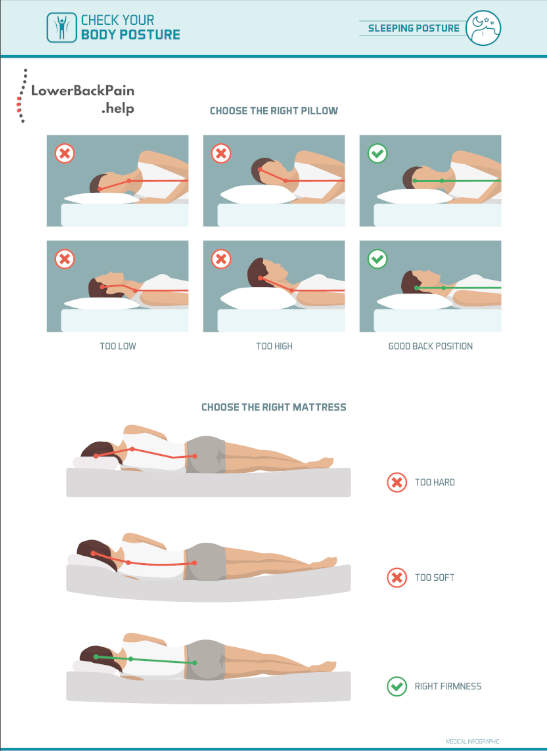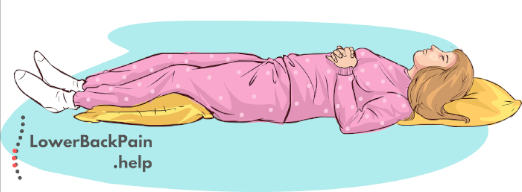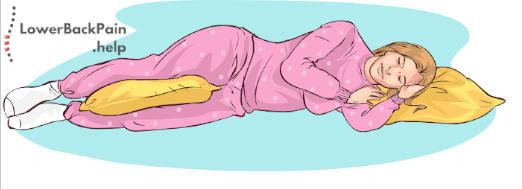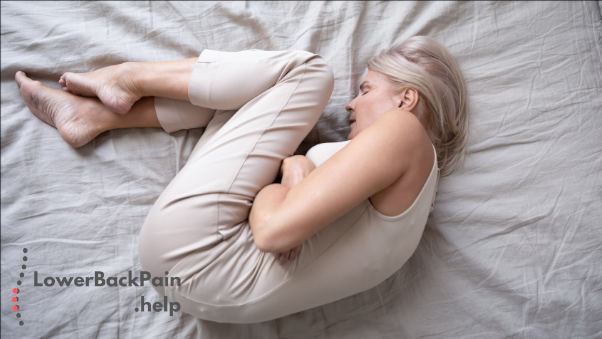Table of Contents
Lower back pain can cause many difficulties with everyday life.
Lifting, twisting, and even sitting can be painful.
But it’s even worse when your back pain makes it difficult to get a good night’s sleep.
This can even become a vicious cycle.
What I mean:
When you can’t sleep, you can’t heal; when you can’t heal, your pain can get worse.
So, how can you get a good night’s sleep when your back is killing you?
Here’s a quick guide that I put together to help you.
Upgrade Your Mattress and Pillow
A better mattress and your pillow can help you get a better night’s sleep.
This is true for everybody, but especially true if you experience lower back pain.
Generally, a firm or medium-firm mattress is going to be your best choice. Don’t go for the soft mattress, because you need a firm basis for your spine.
Of course, this can vary depending on your body shape and size.
If you have wide hips, for example, a mattress that is a bit more on the soft side may be more comfortable while still providing enough support.
On the other hand, if you have narrower hips, a firmer mattress will be necessary to support your spine and keep it properly aligned.
But again: if you can’t decide if you should take the softer version or the firm one – go with the firm mattress.
But I know that not everybody can afford to run out right this second and buy a new mattress.
Put a sheet of plywood underneath for added support. Many home improvement retailers offer a wood-cutting service. Some are even free – you just pay for the wood. The plywood should not be thinner than 1/4 inch.
Another option is a foam mattress topper that can also breathe new life into
a worn-out spring mattress. You can find cheap ones at your IKEA store.
Similarly, a new pillow can also help with lower back pain.
At first, this might seem counterintuitive. What does your pillow have to do with your lower back?
Simply put, it helps your whole spine maintain proper alignment.

A good pillow should be plump and firm and maintain its shape after use.
Memory foam is an excellent choice since it conforms to your head and neck, then springs back into shape.
What type of pillow you use will depend on your favored sleep position.
If you sleep on your side, a thicker pillow is ideal. It should support your head so that your neck is straight while you’re sleeping.
Back sleepers will do better with a thin pillow because a thicker pillow can raise the head too high. Again, your back should be straight and aligned.
Stomach sleepers should also use a thin pillow – or no pillow at all.
This will keep the pillow from pushing your head back and putting pressure on your neck. Regardless of what type of pillow you use, it should be changed every 12 to 18 months to ensure maximum support and prevent dust mites.
Your Sleep Position
Once you’ve found the right mattress and pillow, it’s important to sleep in the right position. Not all positions will be comfortable for all people. That said, there are a few positions that work better than others for relieving lower back pain.
-
Sleep on Your Back and Support Your Knee
To maintain good back alignment, a simple method is to lie on your back and support your knees.
As you can see in the picture below here is how to do it:
- Put a pillow under your knees to add support
- Ensure that your head is straight, not twisted
- Use extra pillows to keep your head straight if you need to
- To further support your spine, you can fill in any extra gaps with additional pillows. For example, put one under your back to support your lumbar area

Sleeping in this position will distribute your weight evenly along the full length of your body. It also eliminates pressure points and keeps your head, and spine properly aligned. Also, your neck benefits from sleeping in this position.
-
Sleep on Your Back in a Recliner
Sleeping in a recliner can significantly reduce back pain by redistributing weight to your legs and buttocks. If you’re a back sleeper and nothing else is helping, think about sleeping in a recliner, or even buying an adjustable bed.
-
Sleep on The Side With a Pillow Between Your Knees
If you prefer to sleep on your side, you can run into some issues.
In particular, side sleeping can pull your spine out of alignment, right in the lumbar region. Needless to say, this is not ideal for lower back pain.
To correct this, try placing a firm pillow between your knees just like you see in the picture below.

This will lift your upper leg, straightening out your hips and your spine.
If you often roll over onto your front, add another pillow in front of your chest. Not only will this keep you from rolling over, but it’s a soft, comfortable object to snuggle.
-
Sleep in the Fetal Position
Curling up in the fetal position can relieve a lot of stress on your spine. Because the fetal position keeps your joints open and relaxed, it imparts virtually zero stress.

This is particularly true if you suffer from a herniated disc, which can make most other positions uncomfortable.
Make sure to keep your back straight, though, and also use a nice, thick pillow to keep your head and neck straight. The picture above shows the fetal position. The back is not as straight as it should be, and the pillow is missing.
-
Sleep on Your Front With Your Head Face Down
One reason that sleeping on your front can be bad for your back is that your head is turned to the side. This twists your spine, putting stress on your shoulders and upper back.
If you find stomach sleeping to be comfortable, try using a small, firm pillow or rolled-up towel to prop up your forehead. This will allow you to have room to breathe.
When you do this, put another pillow under your stomach and hips. This will help keep your back entirely straight, relieving stress on your vertebrae.
To be honest with you, I believe sleeping on your front is the worst position possible. You should always try to sleep on your back or side if possible.
-
Sleep on Your Front With a Pillow Under Your Stomach
If putting a pillow under your forehead doesn’t work for you, you can always keep your head turned to the side. As we already mentioned, this isn’t ideal. However, it can be more comfortable for most people.
To make it a bit better, put a thin pillow under your stomach and hips to keep your spine straight. And use another thin pillow for your head. Or even better: don’t use one at all.
This way, you avoid putting backward pressure on your neck.
If you want to know everything we know about lower back pain (what helps, what does not help) please subscribe to the Newsletter below.
This is the best place to get all the insights, the latest updates, and also our tips and tricks of what you can do to fight the pain (and making sure it’s not coming back).
